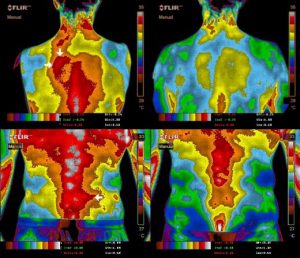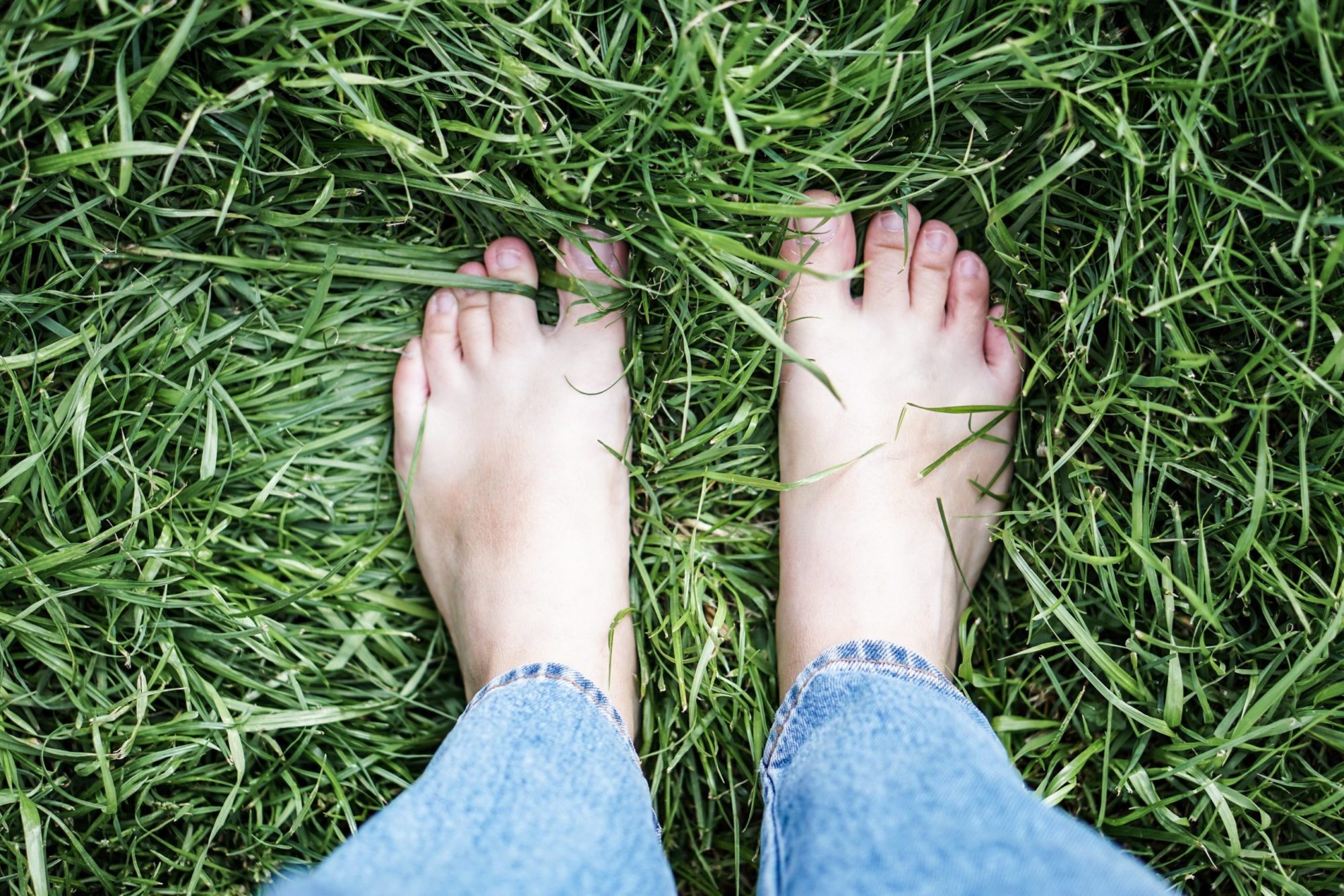We’ve all heard the phrase, “get grounded” before. Perhaps it was during a yoga class, in an inspirational Instagram post, or from your friend who is a self-proclaimed tree-hugger. What does it actually mean to be grounded? There are many different ways to understand the concept, but it essentially focuses on connecting with the earth. In meditation and yoga, practitioners are often guided to direct their attention to their points of contact with the earth as a way to bring their awareness into their bodies and out of their thoughts. Some meditation practices even utilize visualization of a grounding cord that connects the base of the spine to the center of the earth. These are all ways of grounding our minds, but there are ways to physically ground our bodies, too.
Here’s a fun fact for you: our bodies are electric. If you’ve ever studied action potentials and synaptic transmission (shout out to my fellow neuroscience nerds), or run your feet across a carpet and received a shock upon touching a metal doorknob, or tried to use your iPhone with non-metallic gloves on, you’re familiar with this. On the off chance that you’ve never experienced any of those things, here’s a fun anecdote about punching someone with a fist made of fuzzy balls, or something like that. As whimsical as it may seem, this is a seriously amazing power whose subtleties are often overlooked. Your body relies on electricity to function at the most essential level. It responds to electrical charges, and any time you are in contact with something electric, there is an interaction.
Here’s a second fun fact for you: The earth is electric, too. The electrical currents produced by the liquid metal floating around in the earth’s core are likely to thank for this. Odds are that this is not news to you, but how does it apply to grounding? For many various and wonderfully confusing meteorological reasons, the earth’s surface has an excess of electrons. When we stand barefoot on the earth, or at least without insulating, rubber-soled footwear, we basically become conductors of the earth’s electrical current. WOAH.

Top: 44yr old female with chronic middle back pain. Results – 30% pain reduction after 4 nights of sleeping grounded, and complete pain resolution after 8 weeks.
Bottom: 85yr old male with chronic lower back pain. Results – 50% pain reduction after 2 nights of sleeping grounded and complete pain resolution after 4 weeks. (Amalu 2004 via earthingcanada.ca).
I know you’re not all sixth-grade science geeks who find this inherently fascinating, so let me tell you why this is relevant to your health. Essentially, the free electrons we receive from the earth when we ground can bind to and neutralize free radicals in our bodies. Those free radicals could otherwise be causing oxidative stress and inflammation, and that inflammation can wreak all sorts of havoc on the body if it sticks around too long. Oxidative stress from those free radicals can have negative effects on DNA and protein molecules, which subsequently affects nearly every structure and process in the body. Our brains are especially vulnerable to oxidative stress, and thus there is a significant connection seen between mental illness and oxidative stress, including anxiety and depression.
The research here is simple but surprisingly impressive and convincing. Upon learning about the benefits of grounding, many people, including myself, have adopted it as a part of their daily routine. Some people have even found that integrating a more intensive grounding practice can significantly help with disease recovery. The folks at Earthing.com made a documentary about the whole idea that’s worth a watch if you’re curious. They’ve even made sheets, blankets, mats, and more that plug into a grounded outlet and allow you to connect directly to the electrical current of the earth without going outside.
Even if you don’t buy into the curative powers of grounding and aren’t being called to buy conductive sheets to sleep on, at its core, grounding is one of the easiest things you can do for your well-being. It’s literally as simple as stepping outside and putting your bare feet in the grass for a few minutes. I try to get in at least a few minutes of earth time every day. I sit in my little patch of grass in front of my house in the city and read, meditate, or just observe the funny looks I occasionally get from passersby. If you’re lucky like me and work from home, you can even take your computer outside and fund your growing house plant collection while you soak up the earth’s healing energy.
 Anecdotally, I can say that I really do feel a difference in my well-being from adding a bit of grounding into my day. Putting my feet in the grass is one of the few things I can count on to consistently relieve anxiety. Physically grounding my body also provides a significant boost to my mentally grounding activities, like meditation. Maybe you are a yogi and are looking to advance that practice, or maybe you are interested in grounding as a way to help with a chronic inflammatory condition. If you’re like me, you might just be pretty jazzed about the fact that those five minutes a day you spend sitting in the grass like a five year old are actually good for your health. Any which way, there is a lot to be said for the science behind grounding and its ability to showcase the healing power of the earth.
Anecdotally, I can say that I really do feel a difference in my well-being from adding a bit of grounding into my day. Putting my feet in the grass is one of the few things I can count on to consistently relieve anxiety. Physically grounding my body also provides a significant boost to my mentally grounding activities, like meditation. Maybe you are a yogi and are looking to advance that practice, or maybe you are interested in grounding as a way to help with a chronic inflammatory condition. If you’re like me, you might just be pretty jazzed about the fact that those five minutes a day you spend sitting in the grass like a five year old are actually good for your health. Any which way, there is a lot to be said for the science behind grounding and its ability to showcase the healing power of the earth.






[…] picked from the garden and didn’t wash before eating. Whether you do it for the vitamin D, the electrical grounding, or the antidepressant bacteria, get outside and put those toes on the earth. They always did say […]
[…] a big picture perspective, we know that plants are generally good for us. Check out my articles on earthing and mycobacterium if you don’t believe me. Plants produce all of the oxygen we need to survive. […]
[…] away the thick-soled, constrictive shoes lets you be closer to the earth, helping you feel more grounded, and thus more connected with your body and the world around you. Any time we can free ourselves […]